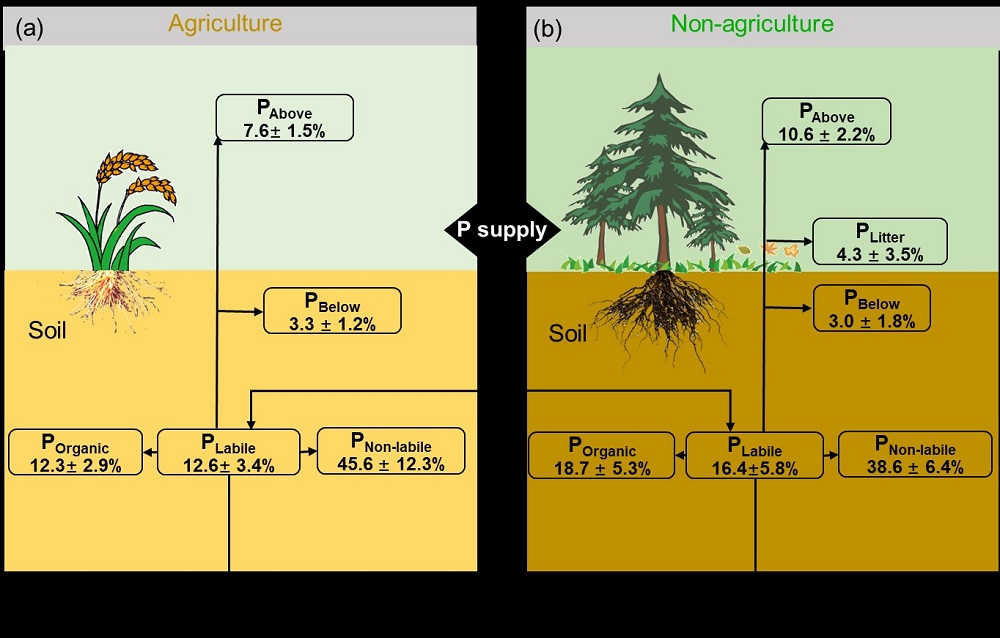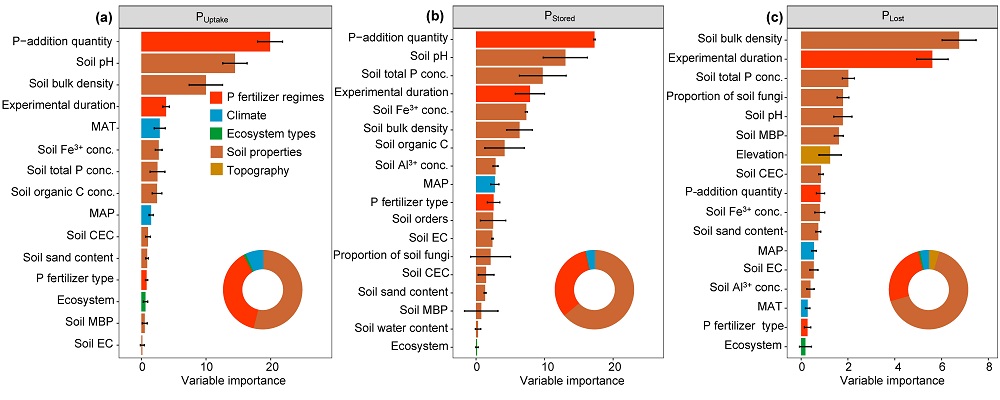The global fate of inorganic phosphorus fertilizers added to terrestrial ecosystems
Phosphorus (P) is essential for the growth, functioning, and reproduction of all life on Earth. To meet the increasing demand for food and wood production, the global annual inorganic P (Pi) fertilizer consumption has increased from 5.0 Tg (1 Tg = 1012 g) in 1961 to approximately 25 Tg in 2020, and is expected to reach 27 Tg in 2050. Phosphorus fertilizer stems mainly (84~90%) from non-renewable geological P deposits, and is estimated to be depleted in 50 to 400 years. Therefore, limited P resources may be not able to meet the increasing global demand for Pi fertilizer. Meanwhile, applying P with low use efficiency (less than 15% of Pi fertilizer taken up by plants) increases P loading of surface and ground waters, resulting in eutrophication, as a major environmental problem in many areas of the world. The supply-demand dilemma and P-eutrophication can be partly resolved by effective utilization of Pi fertilizer, which requires a good understanding of the fate of applied Pi fertilizers.
South China Botanical Garden, Chinese Academy of Sciences built a global database of the fate of Pi fertilizers [the percentage of Pi fertilizer taken up by plants (PUptake), the percentage of Pi fertilizer stored in the soil (PStored), and the percentage of Pi fertilizer lost, (PLost)] including 987 paired P-addition field observations complied from 274 papers published between 1972 and 2021. With this global database, we first quantified the fate of applied Pi fertilizer and then explored the mechanisms underlying its variations across sites using a meta-analytic approach and MetaForest algorithms typically used in ecological studies. Our results show that on average, PUptake, PStored, and PLost account for 12.6%, 67.2%, and 4.4% of added P fertilizer at the global scale. The MetaForest analysis reveals that P-addition quantity, experimental duration, soil total P concentration, soil pH, and soil bulk density were main moderators in controlling Pi fertilizer fate. These findings improve our mechanistic and predictive understanding of the fate of P fertilizer, which has important implications for resolving the dilemma of predicted P resource deficiency.
The study titled “The global fate of inorganic phosphorus fertilizers added to terrestrial ecosystems” was published online in One Earth (5-year Impact Factor = 18.1). Dr Xianzhen Luo from Phosphorus Research Group at the South China Botanical Garden, is the first author of the paper, and Researcher Dazhi Wen and Enqing Hou are the corresponding authors. This research was jointly funded by the National Natural Science Foundation of China's Outstanding Youth Fund project and the Guangdong Province Basic and Applied Basic Research Fund, and other projects. The article link is: https://www.sciencedirect.com/science/article/pii/S2590332224003270
First author information: Dr Xianzhen Luo is a terrestrial carbon and phosphorus biogeochemist in South China Botanical Garden, Chinese Academy of Sciences. E-mail: luoxz@scbg.ac.cn

Figure 1. The fate of inorganic P fertilizer added into terrestrial ecosystems expressed as a percentage of P-addition quantity.

Figure 2. Relative importance of variables in predicting variation in the fate of inorganic P fertilizer.
File Download: